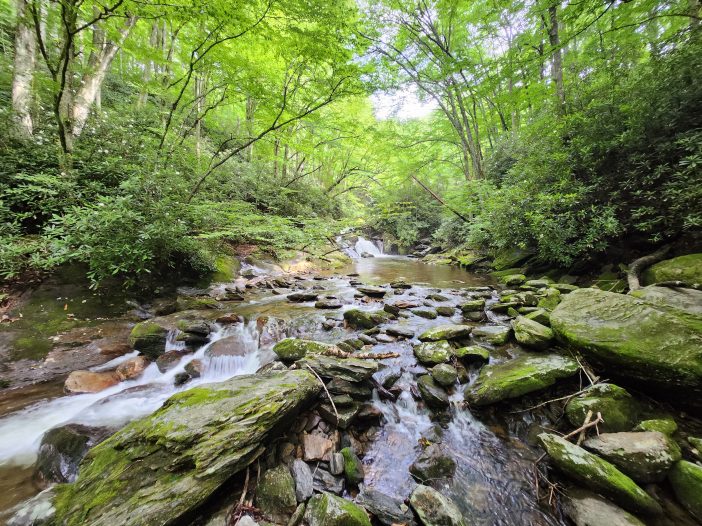Brevard, North Carolina is home to a rare sight: white squirrels. These striking animals aren’t albinos but leucistic gray squirrels with snowy coats and dark eyes. This article explores their unique history, where to find them in town, and why they’ve become a symbol of local pride and care for wild places.
Read MoreNatural Wonders
Leaf Season in Western North Carolina
The Long Autumn Western North Carolina does not rush into autumn. The change arrives in stages, beginning high in late September and rolling slowly into the valleys by early November. The length of this descent is nearly six weeks long and is what makes the region rare. Most places offer a brief two-week window of […]
Read MoreWNC Backpacking Guide: Great Smoky Mountains, Pisgah National Forest & Blue Ridge Parkway Routes
Western North Carolina’s premier backpacking destinations, from the iconic Great Smoky Mountains National Park with its 100+ backcountry campsites to the challenging Art Loeb Trail through Pisgah National Forest. This comprehensive guide covers permit requirements, seasonal considerations, safety protocols, and detailed route descriptions for multi-day adventures across the region’s most spectacular wilderness areas.
Read MoreSkinny Dip Falls: Washed Away But Not Forgotten
Skinny Dip Falls once offered clear pools, a short hike, and a sense of peace near milepost 417 on the Blue Ridge Parkway. After the 2021 flood from Tropical Storm Fred, the falls were torn apart but the memories remain.
Read MoreTranquil Waters: Exploring the Best Natural Swimming Holes in North Carolina
Dive into the natural beauty of North Carolina with our detailed guide on the top ten natural swimming holes in the state. From the verdant Pisgah National Forest to the tranquil waters of White Lake, we take you on a journey through these aquatic gems, providing key information on location, hazards, costs, and access. Embrace the spirit of adventure and immerse yourself in the untamed splendor of the Tar Heel State.
Read More



